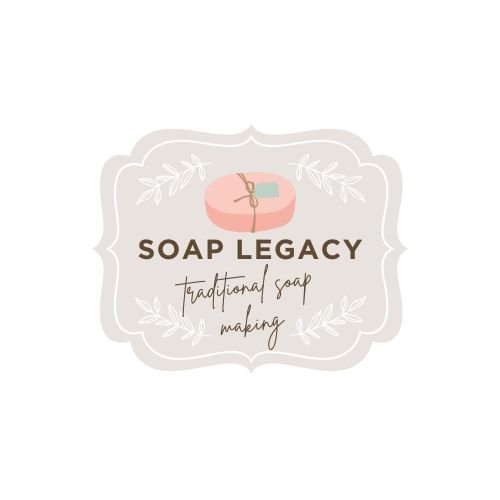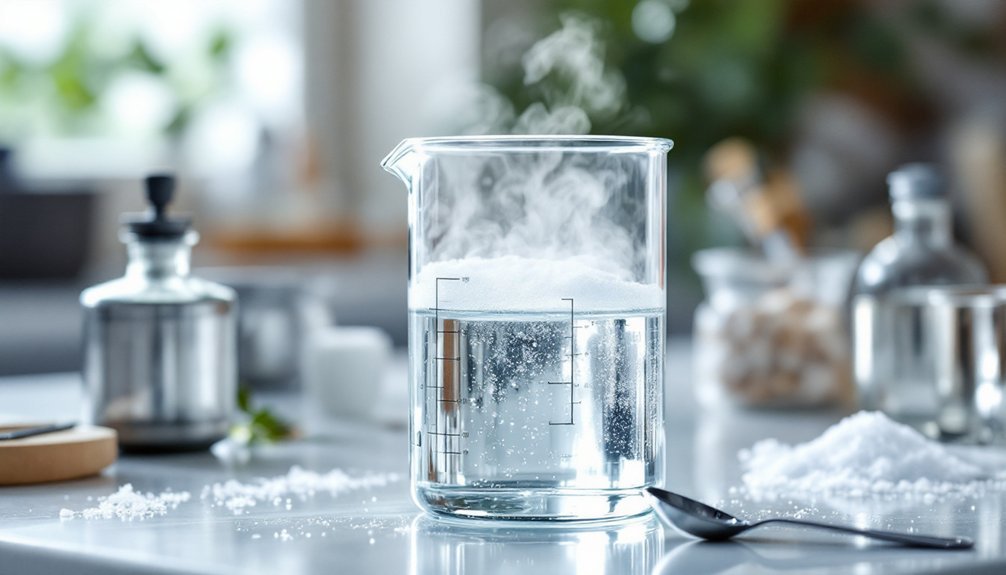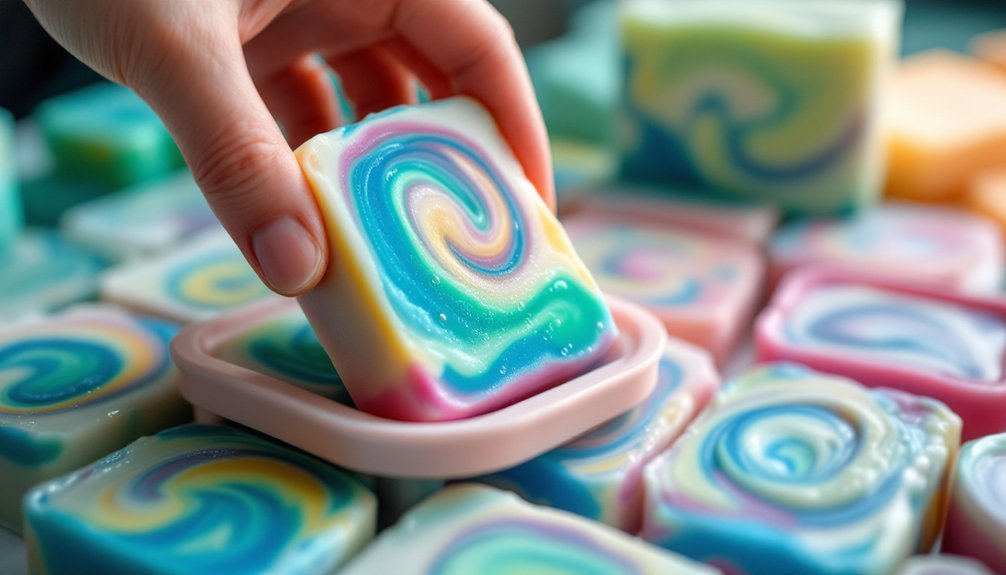You can infuse citrus oils into cold process soap through several effective methods. Add essential oils at light trace, use folded citrus oils for better scent retention, or create natural infusions using fresh zest in carrier oils. For zest infusions, combine one part dried citrus zest with three parts carrier oil and heat for 2-3 hours. To enhance stability and longevity, blend citrus oils with complementary scents. Mastering these techniques will unleash the full potential of your citrus soap creations.
Understanding Citrus Oil Properties in Soap Making

While citrus oils add invigorating fragrances to cold process soap, they present unique challenges that require careful consideration during the soap-making process.
Citrus oils bring bright, fresh scents to handmade soaps but demand special attention to achieve the best results in cold process soapmaking.
When you're working with citrus essential oils, you'll need to address their tendency to evaporate quickly during saponification. You can improve scent retention by using folded oils or adding them at light trace.
Be mindful of the phototoxic nature of expressed oils like bergamot and lime, which can make skin more sensitive to sunlight.
To enhance your soap's aromatic profile, try blending citrus oils with complementary scents. For example, combine lemon with litsea cubeba or lime with spearmint.
You can also incorporate fresh lemon zest, though you'll need to monitor how it affects your cold process soap's final appearance and fragrance during saponification.
Methods for Adding Fresh Citrus Zest

Several effective methods exist for incorporating fresh citrus zest into your cold process soap. You'll want to focus on using only the outer zest to capture the natural fragrance, avoiding the bitter white pith. Add 1-2 ounces of slightly dried zest to your oils before melting to guarantee proper infusion during the saponification process.
| Method | Benefits | Tips |
|---|---|---|
| Oil Infusion | Even distribution | Pre-dry zest slightly |
| Direct Addition | Strong initial scent | Use 1-2 oz per batch |
| Layered Method | Visual appeal | Avoid white pith |
Remember that moisture control is vital when working with fresh citrus zest. The saponification process will naturally break down the zest, leaving you with a subtle fragrance in your final product. While the texture may not be noticeable, the aromatic properties will enhance your cold process soap.
Essential Oil Blending Techniques

Building upon the natural citrus elements from fresh zest, creating effective essential oil blends takes your soap's fragrance to the next level.
When you're blending citrus oils for your handmade soap, combining lemon with litsea cubeba essential oil can create lasting, vibrant scents in your cold process soap.
To maximize scent retention, you'll want to use folded citrus oils, which offer concentrated aromatic properties that withstand the saponification process better than their standard counterparts.
Folded citrus oils pack concentrated aromatic power, helping your soap's fresh scent survive the saponification journey better than regular essential oils.
Be mindful of phototoxic properties when working with bergamot, lime, and lemon oils in your essential oil blending process.
Start with small test batches to perfect your ratios and evaluate how different combinations perform.
You'll discover that strategic blending not only enhances fragrance longevity but also creates unique, appealing scent profiles your customers will love.
Natural Infusion Process and Timing

You'll find that creating natural citrus infusions requires careful timing and technique, with fresh peels needing several weeks of sunlight exposure while being gently shaken daily for ideal fragrance extraction.
When infusing citrus oils for cold process soap, incorporate one part fresh zest to three parts carrier oil before the melting phase to maximize the aromatic compounds.
For quicker results, you can heat dried citrus zest in your chosen carrier oil using a water bath for 2-3 hours, though this method may yield a lighter scent compared to the traditional steeping process.
Steeping Methods and Duration
While crafting citrus-scented cold process soap, the natural infusion process offers two distinct methods for extracting essential oils from citrus zest.
You'll get the best results by using fresh zest rather than whole peels in your carrier oil, as zest contains concentrated essential oils without the bitter pith.
For a traditional approach, you can place your zest and oil mixture in a sunny spot for several weeks, remembering to shake the jar daily. This slow steeping method allows the citrus oils to gradually infuse into your carrier oil.
If you're short on time, try the quick infusion method. Simply heat your zest and oil mixture in a water bath for 2-3 hours.
Keep in mind that longer steeping times, regardless of method, will produce a stronger citrus scent in your final soap.
Essential Oil Infusion Ratios
The natural infusion process requires careful attention to essential oil ratios for achieving the perfect citrus scent in cold process soap.
You'll want to use 0.5 to 1 ounce of essential oils per pound of base oils, but citrus oils need a higher ratio of up to 1.5 ounces due to their quick evaporation during saponification.
To reach maximum potency, you can enhance scent strength by combining complementary oils like spearmint or lemongrass with your citrus infusion.
- Steep citrus peels in oils for several weeks to achieve robust fragrance
- Adjust ratios based on your chosen infusion method (quick vs. slow)
- Blend multiple essential oils to create complex scent profiles
- Monitor infusion timing carefully – quick methods take hours, while slow methods require weeks
Time-Tested Extraction Techniques
Natural citrus oil extraction follows two distinct paths: traditional cold infusion and accelerated heat methods. When you're making soap, you'll need to choose between these time-tested techniques for infusing citrus peels into carrier oils.
| Method | Process |
|---|---|
| Cold Infusion | Wilt citrus peels for 24 hours |
| Preparation | Chop peels and pack in jar |
| Oil Coverage | Add essential carrier oils |
| Processing | Place in sunny spot for 2-3 weeks |
| Completion | Strain through cheesecloth |
For the traditional approach, you'll want to let fresh lemon and other citrus peels wilt before chopping them. Pack these into a jar, cover with your chosen carrier oil, and let nature do the work. If you're short on time, try the heated method – simply warm your oil and peels in a water bath for 2-3 hours, then strain.
Preserving Citrus Scents Through Curing

Preserving citrus scents during soap curing poses unique challenges that require careful attention to detail.
You'll find that proper curing of cold process soap for 4-6 weeks helps stabilize citrus oils throughout saponification, ensuring better scent retention. When working with essential oils, opt for folded citrus oils to achieve a more complex and lasting fragrance profile.
- Store your cured soap in cool, dark places using airtight containers
- Select quality folded citrus oils over single-note varieties
- Avoid using fresh lemon juice, which can disrupt the lye reaction
- Consider incorporating citrus zest for complementary natural aromas
Your success in maintaining vibrant citrus scents depends on proper storage conditions and ingredient selection.
Achieving long-lasting citrus fragrances in soap making requires careful attention to storage methods and choosing the right ingredients.
While citrus zest can enhance fragrance, remember that saponification will alter these natural oils, making thorough testing essential before finalizing your recipe.
Troubleshooting Common Infusion Challenges
When infusing citrus oils into cold process soap, you'll likely encounter several common challenges that can affect your final product's quality.
To overcome scent retention issues with citrus essential oils, you'll need to adjust your infusion times and temperatures carefully. Start by conducting small batch tests to determine the best combinations for your specific recipe.
You'll want to avoid using the pith when working with lemon zest, as it can introduce unwanted elements during the saponification process. Instead, focus on the zest's concentrated oils for better results.
If you're working with expressed citrus oils, remember they're phototoxic, so consider using them in nighttime products.
To combat the natural volatility of citrus oils, try blending them with heavier oils or opt for folded versions to enhance their staying power.
Frequently Asked Questions
How Do You Add Citric Acid to Cold Process Soap?
You'll need to dissolve 1 teaspoon of citric acid per pound of oils in distilled water first. Add this solution to your soap mixture during the trace phase, ensuring it's evenly distributed.
What Is the Best Oil Combination for Cold Process Soap?
You'll get the best results using 35% coconut oil, 35% olive oil, 20% palm oil, and 10% sweet almond oil. This combination creates a well-balanced bar with good lather and moisturizing properties.
How to Make Citrus Scented Soap?
To make citrus-scented soap, you'll need to blend essential oils like lemon, lime, or orange with your soap base. Add freshly grated zest and use folded oils for better scent retention during curing.
Which Process Is Usually Used to Extract Oils From Citrus Peels?
You'll find that cold pressing is the primary method used to extract oils from citrus peels. The process involves mechanically pressing the peels to release essential oils, preserving their natural aroma and properties.
In Summary
You'll find that successfully infusing citrus oils into cold process soap requires careful timing and technique. By incorporating oils at trace, using essential oil anchors, and adding fresh zest during mixing, you'll maximize the citrus scent retention. Don't forget to account for the natural fading during cure time. With proper measurements and temperature control, you'll achieve that perfect citrus-scented bar every time.





Leave a Reply